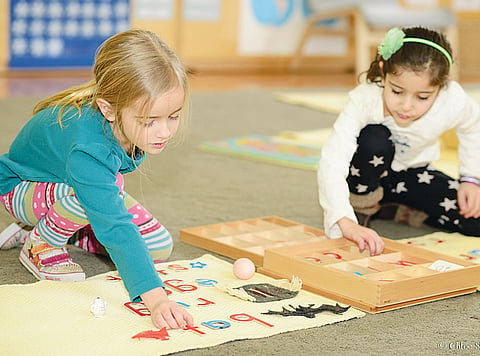

It is the year 1893 at the University of Rome. Classes have let out for the day and the university grounds are quiet and deserted. Somewhere in a lab, a woman stands with a scalpel in hand. In front of her is a sample cadaver.
The woman’s name was Maria Montessori, and the reason she had to carry out her dissections after her classmates had gone home is because, at that time, it was considered improper for a woman to be in a class with male classmates when a naked body was being studied. In fact, medicine was an unusual course of study for women at the time, but Montessori was used to taking her own path in life.
She graduated secondary school with certificates in physics and mathematics, and considered engineering before turning to medicine. Her medical studies led to her work with mentally challenged children. Her experience with them, and as a woman in a field thought of as a man’s domain, made her become an early advocate for freedom for women and education for mentally challenged children.
Until then, these special children were more or less condemned to a marginal life being cared for in institutions. Montessori studied them and started to work out a system for educating them in life skills as well as academics. Just as important, she emphasised proper training for people who were to work as educators for these children. In 1900, she started a school for children with special needs. Far from limiting them to a life of institutional care, she went so far as to prepare some of her students to join mainstream public educations and get a start in life that was only denied to them because of the lack of appropriate and dedicated attention.
Montessori’s research made her wonder if her educational principles could be applied in mainstream education. After further research in psychology, she started her first ‘Casa Dei Bambini’ or ‘House Of Children’ in Rome in 1907. ‘Follow the child’ was a key precept of hers, and she learned a lot from simply observing children and began slowly discarding reward-based teaching, replacing cramped rows of benches with more open-plan educational spaces and child-sized furniture and developing a variety of educational materials.
Instead of making students sit in rows and learn the same lesson at the same time, Montessori introduced a mix of structure and freedom. There were schedules for the day, but within each slot kids could choose from a variety of educational activities. Instead of reading out a lesson, teachers would act as facilitators, guiding students through more and more advanced activities that would teach them life skills, ways of interacting and concepts in maths, languages and so on.
India was one of the earliest countries to introduce Montessori education, due to Rabindranath Tagore’s early enthusiasm. In fact when World War II broke out in 1939, Montessori was in Madras, lecturing at the Theosophical Society. She was forced to spend the period of the war in India, moving between Madras and Kodaikanal and visiting Sri Lanka once.
She managed to give her system of education a strong foundation in the country, and to develop her ideas.
After the war, she continued to work in Asia, Europe and America, developing and spreading her ideas. She passed away in 1952, but her legacy lives on in the greater role of women in medicine, in the ongoing development of teaching techniques for children with special needs and in the thousands of Montessori schools around the world.
Today, the Montessori approach to education is not limited to the schools that overtly follow her system.
Any approach that emphasises self-directed learning, hands-on involvement and experiential education owes something to Maria Montessori’s pioneering work. As an educationist who valued the happiness and individuality of students and believed in ‘discipline through liberty’, she helped shape an approach to learning that was ahead of its time. But being ahead of the times came naturally to Montessori, as we have seen.